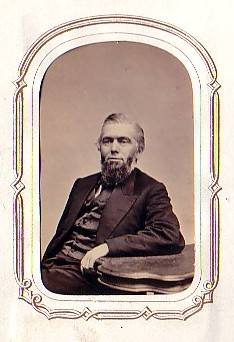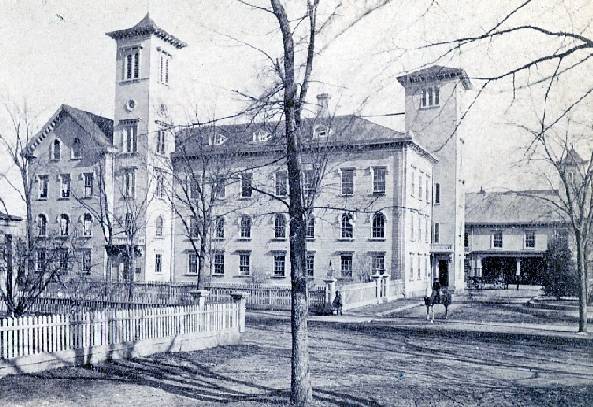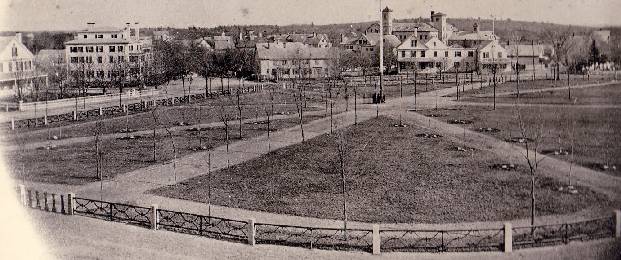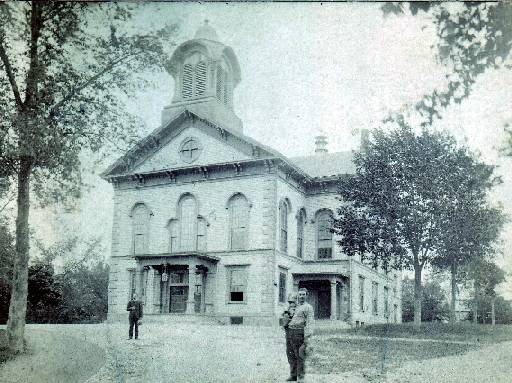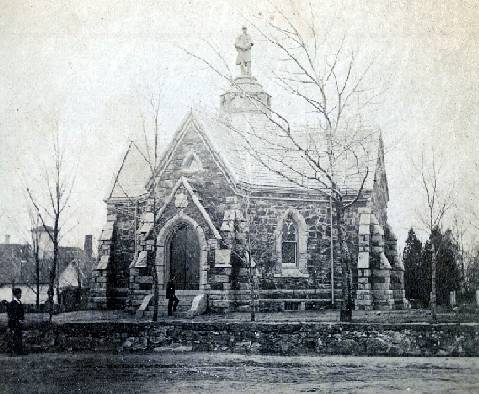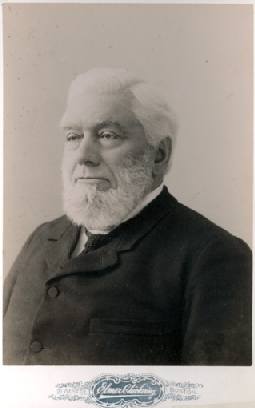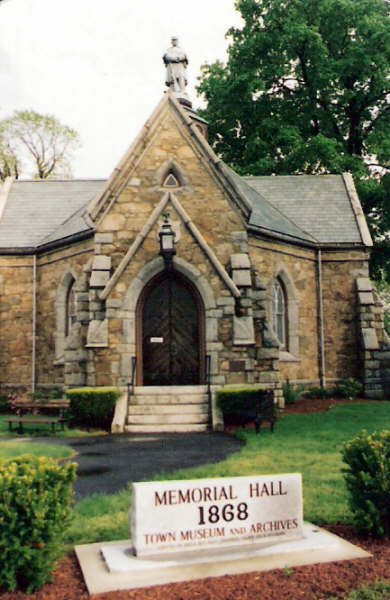
|
Society & Commission
|
|
Our History
|
|
KCH House
|
The Kerr - Carpenter - Haigis House: The Carpenter Family
Erastus Payson Carpenter was born on November 23, 1822 and was called E.P. by most who knew him. At the age of 21 he went into business with his cousin Oliver Carpenter who was involved in the manufacture of straw goods. Shortly thereafter E.P. started working for Oliver's brother Warren Carpenter selling straw goods and six years later became his partner. While working for Warren, E.P. conceived the idea of uniting the many small straw manufacturing plants in Foxboro under one roof."
Before reaching the age of 30 E.P. returned to Foxboro and bought a tract of land on Wall Street. He first built the Great Bonnet Shop (later known as the Verandah House,) and then Hamlet House, but it soon became evident that he could still not meet the growing demands of the business in his existing facilities. In 1852 he, along with cousin Oliver, built the Union Straw Works (shown below) which became the worlds largest straw manufacturing facility and employed thousands of people.
The town's growing prosperity of the 1850s brought great advances in the town and E.P. seemed at the center of it all. In late 1850 a meeting was held to determine what Foxborough could do to improve the fire protection in town. E.P. was chosen as chairman and propostions were created to form a fire department. By-laws for the new department were drawn up and E.P. was elected foreman. On January 2, 1851 the town's first firefighting apparatus, a new Hunneman engine, arrived in town.
E.P. established the first printing plant in Foxboro in 1853. In the mid 1850's E.P. founded the Sylvannian Association, a private group with the public purpose of beautifying the town common. The group cleared away the rock and brush, laid out walkways and planted trees, and had a new cast iron fence cast at the Cary Foundry on Mill Street. The area was transformed from a "wild wasteland" into the town center we know today, and a focal point of the community. The image below shows the common shortly after the Sylvannian Association completed work. To this day, improvements to the Town Common continue to be privately funded.
E.P. chaired the committee which built the Town House (pictured below.) When the project ran over budget, E.P. paid the difference from his own pocket and the building was completed in 1857. E.P. then rented the first floor of the structure at his own expense and started the Foxborough English and Classical High School.
When the Civil War came to the country, he visited the soldiers in Fortress Monroe and Newport News under commission from the town. When he returned to Foxborough, E.P. organized and was made Captain in a company which the town equipped with Sharp's rifles at a cost of $3,000. Since the goverment had not yet recognized rifles as a replacement for muskets, the offer of service was refused. Instead, E.P. was placed in charge of the committee to raise funds for the relief of Foxboro soldiers and their families and the committee raised $10,000. His efforts were appreciated by the men; when former soldiers organized the Grand Army Post, they named it the E.P. Carpenter Post in his honor.
E.P. also served on the committee to construct a "suitable monument" at the close of the Civil war and the result was Memorial Hall (shown below) which was dedicated to "all those whose lives were touched by war." When construction surpassed the original $13,000 budget, E.P. paid for the building's large stained glass window entitled Liberty (he was later reimbursed by town voters.) The building served as the town library for decades and is currently town museum.
As the 1860s closed, E.P. and his wife Catherine continued to raise their five children in the home at the corner of Liberty and Central Streets. Since the nearby Union Straw Works produced its own natural gas and the nearby Reservoir on Powder House Hill supplied water to the local straw works buildings, E.P. brought each of these two improvements to his family's own home. While running water and gas lamps were a dream for some, they were realities for the Carpenter family.
In the early 1870s E.P. sold his stake in the Union Straw Works to concentrate on new ideas that interested him. In the coming years he was President and superintending manager of the building of the Mansfield and Framingham Railroad, of the Framingham & Lowell Railroad, and of the Martha's Vineyard Railroad. He was also the President of the New York B. A. & S. Railroad.
E.P. served as State Senator from 1872 - 1874 and served in the Massachusetts House of Representatives in 1891 when he introduced the State Highway Bill. Shown here is E.P. Carpenter in a cabinet card that probably dates to the end of the 1800s:
In 1900, E.P. witnessed two personal losses suffered by every citizen of the town. On May 28, 1900 the Union Straw works building caught fire and was completely destroyed in under two hours. On June 4th 1900, even as a guard stood watch over the remains of the Straw Works, the Town House became engulfed in flames. While firefighters battled the flames, the bell tower collapsed onto them. Three firefighters lost their lives that night, another was seriously injured, and a community mourned. In just one week E.P. witnessed the destruction of two buildings he helped create.
On the evening of January 31st 1902, E.P. walked across the town common he had helped lay out over 40 years prior and collapsed near the center's flagpole. The life of perhaps the most influential citizen in Foxborough's history came to a close. A simple marker notes the spot on the common where E.P. fell.
As wife Catherine Carpenter aged, she later moved to her sister's house on Baker Street in Foxborough. One October 7th 1908 Catherine passed away in her daughter's home at the age of 88 years.
From the obituary for Erastus Payson Carpenter as appeared in the Foxboro Reporter February 8, 1902:
He was an enthusiastic worker in all that assisted in the town's growth and fame, and no one rejoiced more that did he to speak a good word for the town whenever opportunity offered. He loved Foxboro, and he seemed always young in spirit, active, efficient and strong in the service of this good old town which is in a great measure what Mr. Carpenter has made it.
...
A well spent life has been brought to a close, and there has passed from earth one whose goodness and beauty of character leaves an unobtrusive but far-reaching influence. The loss of such a man as Mr. Carpenter, to any town, cannot be measured. His memory will ever be held sacred by the people of Foxboro, and the work of his hands here will be seen and enjoyed by generations to come.
Please check back for updates - This page last updated 03/24/2018
Images appearing on this website may not be reproduced in any manner without express written permission from the Foxborough Historical Commission.
